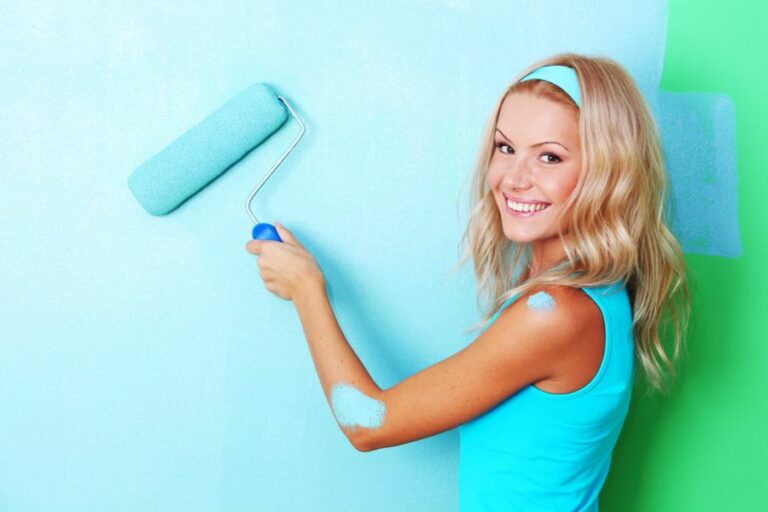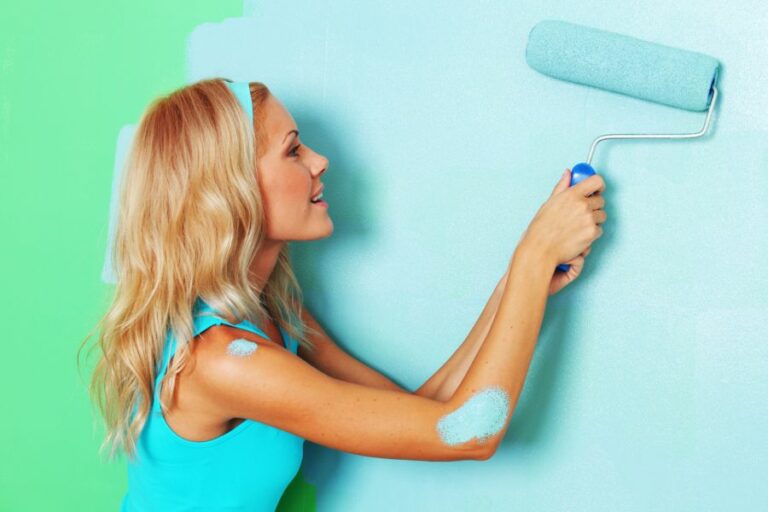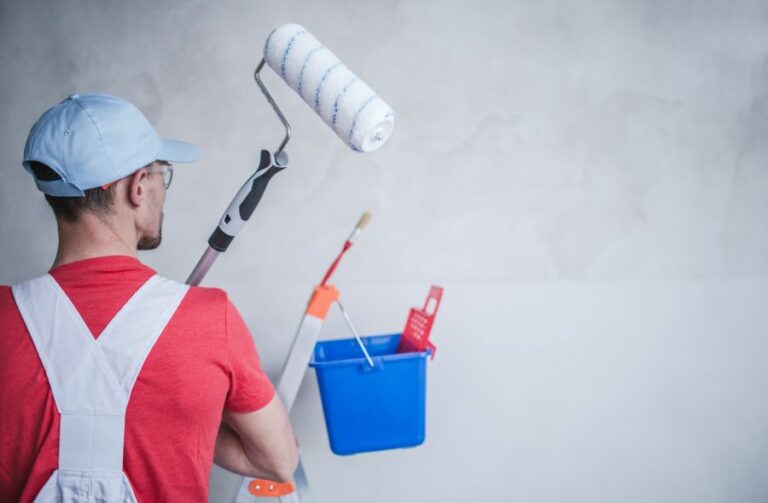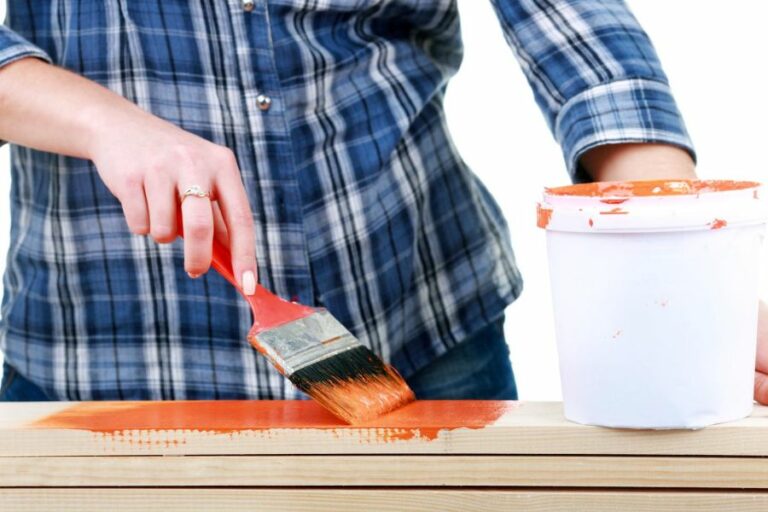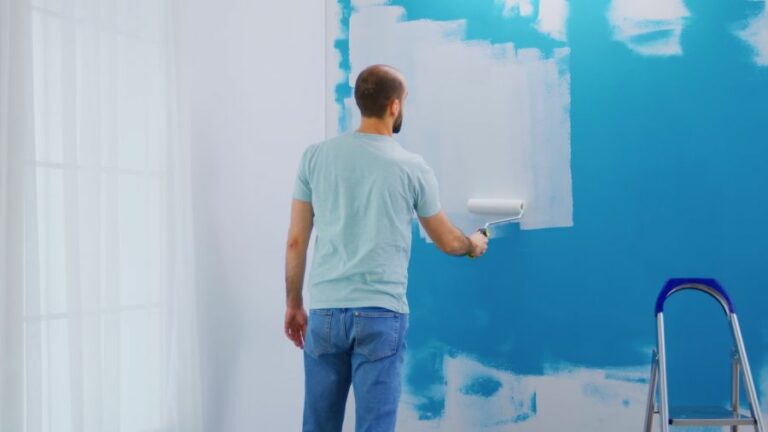Paint That Can Withstand Indoor Moisture, 25 Things You Should Know
Dealing with stubborn moisture issues in your home? Worry no more! I have got the perfect solution for you! Discover the top-rated paint designed to withstand indoor moisture and how it can completely transform your space. Give your walls the protection they deserve today!
Paint that can withstand indoor moisture:
Moisture-resistant paint is crucial for areas with high moisture levels, like bathrooms, kitchens, and basements. Key properties include water-repellency, mold and mildew resistance, and breathability. Moisture-resistant paints include latex-based, oil-based, acrylic, and specialty paints. Proper surface preparation and application techniques ensure a durable finish that protects against moisture damage.

Discover the remarkable paint technology that can resist and withstand indoor moisture, thereby preventing common issues like mold and peeling paint.
Explore this in-depth guide to understanding the science behind this innovation, learn how to choose the best product for your home, and discover tips for a successful, long-lasting paint job. Read on to unlock a healthy, durable indoor space.
Contents
- 1 Interior Paint Resistant to Moisture
- 2 Top Humidity-Resistant Interior Paints
- 3 Moisture-Resistant Paint Options
- 4 Maximum Humidity for Painting Indoors
- 5 Best Interior Wall Waterproof Paint
Interior Paint Resistant to Moisture
When it comes to painting your home, choosing the right paint is crucial, especially for areas with high moisture levels. With the vast array of paint options available, it is significant to understand which paint is best suited for spaces like bathrooms, basements, and kitchens.
• Understanding the Importance of Moisture-Resistant Paints
Indoor moisture can cause a plethora of issues, including mold, mildew, and damage to the building materials. Using moisture-resistant paint can help prevent these problems and prolong the life of your walls, ceilings, and other surfaces.
Not only will this paint help protect your home, but it will also improve the overall indoor air quality and create a healthier environment for you and your family.
• Key Properties of Moisture-Resistant Paints
To ensure that you choose the most effective moisture-resistant paint for your home, there are several properties to consider.
– Water-Repellent
A good moisture-resistant paint should be water-repellent, meaning it won’t allow water to penetrate the surface. This is crucial in preventing damage caused by moisture and dampness.
– Mold and Mildew Resistant
Moisture often leads to mold and mildew growth, which can be harmful to your health. A moisture-resistant paint should contain mold and mildew inhibitors to prevent their growth and maintain a healthy indoor environment.
– Breathable
Though it may sound counterintuitive, moisture-resistant paint should be breathable. This means that it should allow water vapor to escape, which helps in avoiding condensation and paint peeling off the walls.
– Washable
In areas prone to moisture, it’s essential to have washable paint that can be easily cleaned without compromising the paint’s finish or performance.
• Types of Moisture-Resistant Paints
There are various types of paints that offer moisture-resistant properties, ensuring you have plenty of options to choose from depending on your particular needs and preferences.
– Latex-Based Paint
Latex-based paint is an excellent choice for areas with high moisture due to its water- and mildew-resistant properties. This type of paint dries relatively quickly and can be cleaned with soap and water.
– Oil-Based Paint
Oil-based paint is another moisture-resistant option to consider, particularly if your project involves wood surfaces. This paint creates a durable and long-lasting finish, but it takes longer to dry and requires the use of paint thinner for clean-up.
– Acrylic Paint
Acrylic paint is a water-soluble, moisture-resistant choice that provides a durable finish. This type of paint is suitable for various surfaces and is particularly popular for use in bathrooms and kitchens.
– Specialty Paint
There are specialty paints available specifically designed for high-moisture areas. These paints often contain additives to improve their moisture resistance, such as mold and mildew-resistant additives. Be sure to consult the paint’s label to determine if it’s suitable for your project.
• Preparing Your Surfaces for Moisture-Resistant Paint
Before applying moisture-resistant paint, it’s essential to prepare your surfaces properly to ensure the best possible results.
- Ensure the surface is clean and free of dust, dirt, and grease.
- Repair any cracks or holes and sand the surface until smooth.
- If you’re painting a new surface, apply a high-quality primer to provide a solid base for your moisture-resistant paint.
- When painting wood surfaces, use a wood conditioner or wood primer to seal the wood and prevent moisture from seeping in.
• Tips for Applying Moisture-Resistant Paint
Follow these practical tips for the best results when applying moisture-resistant paint:
- Always follow the manufacturer’s instructions on the paint label.
- Choose a high-quality paintbrush or roller for a smooth and even application.
- Apply at least two coats of paint for optimal coverage and durability.
- Allow the paint to dry thoroughly between coats.
• Final Thoughts
Moisture-resistant paint is a must-have for areas like bathrooms, kitchens, and basements. By understanding the properties, types, and proper application techniques, you can ensure a long-lasting, durable finish that will protect your home against moisture damage.
For more information on moisture-resistant paints and their performance, visit the U.S. Environmental Protection Agency’s website.
Top Humidity-Resistant Interior Paints
High humidity can take a toll on your home’s interior paint. It can lead to peeling, bubbling, and mold growth, among other problems. Fortunately, there are paints specifically designed to address these issues.
• Factors to Consider When Choosing Interior Paint for High Humidity Areas
When selecting paint for high-humidity environments, such as bathrooms, kitchens, and laundry rooms, consider the following factors:
1. Moisture Resistance
Moisture-resistant paints are specifically designed to provide greater protection against humidity and dampness. These paints are formulated with special additives that help prevent the paint from absorbing moisture, reducing the risk of damage like peeling and mold growth.
One good example of a moisture-resistant paint is Sherwin-Williams’ Duration Home Interior Acrylic Latex paint.
2. Mold and Mildew Resistance
Some interior paints are formulated with antimicrobial agents that help inhibit the growth of mold and mildew. This feature is crucial in high-humidity environments, as it reduces the risk of unpleasant odors and respiratory issues caused by mold growth.
A notable example is Benjamin Moore’s Aura Bath & Spa Waterborne Interior Paint, which is specifically designed for high-humidity rooms.
3. Sheen Level
Paint sheen refers to the level of gloss or shine that a paint has. In general, paints with a higher sheen are more durable and easier to clean, making them ideal for high-humidity areas.
Semi-gloss and high-gloss finishes are recommended for their durability and moisture resistance, but they can highlight imperfections on walls. Satin finishes are a good alternative, as they offer a balance between durability and less-visible imperfections.
4. Washability
High-humidity areas often need frequent cleaning to maintain a pleasant and healthy environment. Therefore, it’s essential to choose paint with good washability so that the walls can withstand scrubbing without damaging the paint.
For instance, PPG’s Diamond Interior Paint is highly washable and offers great overall resistance to humidity-related issues.
• Best Interior Paint Brands for High Humidity
The following are some of the highly recommended interior paint brands for high-humidity environments:
- Sherwin-Williams Duration Home Interior Acrylic Latex: This moisture-resistant paint is GreenGuard Gold certified, making it highly suitable for high-humidity areas, such as bathrooms and kitchens.
- Benjamin Moore Aura Bath & Spa Waterborne Interior Paint: This paint is specifically designed for high-humidity environments and contains antimicrobial agents to prevent mold and mildew growth.
- PPG Diamond Interior Paint: A highly washable and durable paint that resists peeling, mildew, and other humidity-related issues.
- Valspar Signature: This paint offers excellent adhesion to high-humidity surfaces and has been shown to inhibit the growth of mold and mildew.
- Behr Marquee Interior Paint and Primer: This paint-and-primer-in-one product is highly durable and provides excellent resistance to humidity, stains, and dirt.
• Paint Application Tips for High Humidity Rooms
To achieve the best results when painting a high-humidity area, follow these helpful tips:
- Properly prepare the surface: Clean and dry the walls thoroughly before painting. Remove any loose paint, grease, or other contaminants to ensure proper paint adhesion.
- Prime the walls: Applying a primer before the topcoat can help prevent moisture from penetrating the paint, reducing the chances of peeling and blistering. Consider using a mold-resistant primer for added protection, such as Zinsser’s Mold Killing Primer.
- Allow adequate drying time: Be sure to allow enough time for the paint to dry between coats, taking into consideration the higher levels of humidity in the room. Follow the manufacturer’s recommendations for drying times.
- Properly ventilate the room: Proper ventilation can help reduce humidity levels and promote faster drying of the paint. Use exhaust fans, open windows, and circulate air with fans as needed.
- Maintain your walls: Regularly clean your walls to prevent the build-up of dirt and grime that can lead to mold and mildew growth. Consider adding a mold-resistant additive to your cleaning solution for added protection.
By considering the factors outlined above and selecting the right paint for your high-humidity area, you can help ensure a long-lasting and beautiful result. Remember to follow proper paint application techniques and maintain your walls regularly to keep them looking fresh and clean.
For more advice on painting in high-humidity environments, consider visiting the US Environmental Protection Agency’s Mold and Moisture in Your Home page for additional information and guidance.
Paint Brand | Type | Features |
|---|---|---|
1. Benjamin Moore Aura Bath and Spa | Acrylic Latex | Designed specifically for high-humidity areas, optimal for bathrooms and spas. |
2. Sherwin-Williams Duration Home | Acrylic Latex | Excellent durability, moisture-resistant coating, ideal for high-traffic areas. |
3. PPG PermaCrete | Masonry Paint | Alkali-resistant, moisture-resistant, great for interior and exterior use in humid conditions. |
4. Zinsser Perma-White | Mold and Mildew-Proof Paint | Mold-resistant, moisture-resistant, designed for high-humidity and high-condensation areas. |
5. Behr Premium Plus Ultra | Acrylic Latex | Stain-blocking, moisture-resistant, perfect for kitchens, bathrooms, and laundry rooms. |
Moisture-Resistant Paint Options
Moisture-proof paint is a necessity for many property owners who need to protect their buildings from dampness, condensation, and potential damage caused by water ingress.
• What Is Moisture-Proof Paint?
Moisture-proof paint is a type of coating designed to create a barrier that prevents moisture and water from penetrating the applied surface.
It is formulated with specialized ingredients and additives to effectively resist water intrusion and protect surfaces from potential damage due to dampness and condensation. Some common types of moisture-proof paint include waterproof coatings, water-resistant paint, and damp-proof paint.
– Waterproof Coatings
Waterproof coatings are specifically engineered to provide a complete moisture barrier, protecting surfaces from water penetration, mold growth, and damage due to moisture.
These coatings are typically thick, elastomeric products that can bridge cracks and gaps to create a seamless, continuous layer of protection. Examples include liquid rubber or bituminous coatings. They can be applied to a range of surfaces, such as concrete or masonry.
– Water-Resistant Paint
Water-resistant paint is a type of moisture-proof paint that is generally used for interior and exterior walls, providing a breathable and durable finish that can effectively withstand moisture ingress.
The coatings can be easily applied, similar to regular wall paint, and are available in different finishes, such as matte or gloss. They are often formulated with acrylic, latex, or silicone additives to improve their water-repelling properties.
– Damp-Proof Paint
Damp-proof paint is specifically designed for use on walls, ceilings, or floors affected by dampness, condensation, or mold growth. It forms a moisture-resistant barrier that inhibits further dampness, as well as protects the surface from potential damage.
Damp-proof paint is commonly used in conjunction with other damp-proofing systems or treatments, such as sealing and ventilation.
• Does Moisture-Proof Paint Work?
Moisture-proof paint is effective in specific applications and scenarios, where it can provide a reliable barrier against water infiltration and protect surfaces from moisture-related damage.
Nonetheless, it is crucial to understand that moisture-proof paint alone is not a comprehensive solution for all damp or moisture-related problems.
It is essential to identify the cause of the moisture ingress and ensure necessary steps are taken to rectify the issue before applying a moisture-proof paint or coating. In some cases, additional remedies like proper ventilation, insulation, or sealing might be required to tackle the problem effectively.
• Tips for Choosing and Applying Moisture-Proof Paint
– Surface Preparation
Proper surface preparation is vital for the effectiveness and longevity of the moisture-proof paint. Surfaces should be clean, dry, and free from dust, dirt, and loose debris. Any existing mold or mildew should also be removed and treated, along with fixing any existing leaks or sources of moisture ingress.
– Choose the Right Product
With numerous moisture-proof paint products available in the market, it is essential to select the right product for the specific application and surface. Waterproof coatings are ideal for outdoor surfaces or areas with direct water contact, while water-resistant paint is suitable for interior and exterior walls.
Damp-proof paint should be used on surfaces affected by dampness or condensation in conjunction with other damp-proofing methods.
– Follow the Manufacturer’s Instructions
Always read and follow the manufacturer’s instructions and guidelines for the chosen moisture-proof paint product. Each product may have different specifications, recommended coverage rates, drying times, and multiple coats’ requirements.
This information is vital for ensuring maximum performance and effectiveness of the paint.
– Use Proper Application Techniques
Applying the moisture-proof paint uniformly, using the right tools (such as rollers or brushes), and maintaining recommended thickness are crucial for optimal performance.
Over-thinning or improper application can compromise the paint’s effectiveness, leaving areas unprotected or more susceptible to moisture ingress.
• Final Thoughts
Moisture-proof paint can play a vital role in protecting surfaces and structures from the detrimental effects of dampness, condensation, and water ingress.
However, it is essential to choose the right product for the specific application and ensure proper surface preparation and application techniques are followed.
Additionally, addressing any underlying moisture issues beforehand is crucial to guarantee the moisture-proof paint’s effectiveness and the aftercare of your property.
For more information on damp-proofing and moisture protection methods, check out this resource from the National Park Service’s Technical Preservation Services.
Maximum Humidity for Painting Indoors
Painting in high humidity can be quite challenging for both professional painters and DIY enthusiasts alike. In fact, humidity is one of the most crucial factors to consider when it comes to giving your walls, doors, or furniture a fresh coat of paint.
• Ideal Humidity Levels for Different Types of Paint
Although paint manufacturers often have different recommendations for ideal humidity levels, a general rule of thumb is to paint when the humidity is between 40% and 70%.
Painting in humidity levels outside this range is not advisable, as it can lead to poor paint adhesion and undesirable results. Let’s delve further into how different types of paint fare under varying humidity levels.
– Water-based Paints
Water-based paints, such as latex or acrylic, are generally more tolerant of humidity than oil-based paints. They can be applied in humidity levels up to 85%, although it is still best to keep within the 40-70% range mentioned earlier.
For these paints, one should also consider the surface to be painted, as the drying time for water-based paint on porous surfaces, such as wood and concrete, can be prolonged in high humidity.
The University of Kentucky suggests that the ideal conditions for drying water-based paints are between 60-70°F (15-21°C) and relative humidity of 40-50%.
– Oil-based Paints
Oil-based paints, on the other hand, are more sensitive to humidity. As drying times for these paints are generally longer than water-based paints, high humidity can further extend the drying process. For best results, it is recommended to apply oil-based paint in humidity levels below 60%.
• Effects of High Humidity on Paint
There are several negative effects of painting in high humidity that one should be aware of before embarking on a painting project. Some of these issues include:
- Longer drying time: In high humidity, the moisture in the air prevents the paint from properly drying. This can lead to a prolonged drying process, making it difficult to apply additional coats within the recommended time frame.
- Poor adhesion: High humidity can cause paint to not adhere properly to the surface, resulting in peeling or blistering.
- Uneven finish: Moisture in the air can interfere with the uniformity of the paint application, causing streaks, runs, or uneven sheen.
- Mildew growth: In damp environments, mildew is more likely to develop on paint surfaces, especially if the paint was not adequately dried before exposure to moisture.
• Tips for Painting in High Humidity
While it is ideal to paint in conditions with humidity levels between 40% and 70%, there may be times when painting in higher humidity is necessary. Here are some tips to ensure a successful paint job in such conditions:
– Monitor Weather Conditions
Before starting any painting project, it is important to keep an eye on the weather forecast. If rain or high humidity is expected, it is best to postpone the painting project or wait for ideal conditions.
– Use the Right Paint
As mentioned earlier, water-based paints tend to perform better in humid conditions. Therefore, it is advisable to opt for latex or acrylic paint when painting in high humidity.
– Adjust Drying Times
When painting in high humidity, it is essential to allow extra drying time between coats. This will ensure each coat has sufficient time to dry before the next one is applied, reducing the likelihood of streaks, runs, or uneven finishes.
– Ventilate the Area
If painting indoors, it is crucial to ensure proper ventilation to help reduce humidity levels. This can be achieved by opening windows and using fans to circulate the air, which will aid in paint drying.
– Employ a Dehumidifier
Another effective way to mitigate the negative effects of high humidity when painting indoors is to use a dehumidifier. By removing excess moisture from the air, a dehumidifier can create a more suitable environment for painting and drying.
• Conclusion
Painting in high humidity can be quite challenging, as it can lead to longer drying times, poor adhesion, and uneven finishes.
The highest humidity level recommended for water-based paints is 85%, while oil-based paints fare better below 60%. However, sticking to a 40-70% humidity range is advisable for the best results.
By monitoring weather conditions, using the right paint, adjusting drying times, ventilating the area, and employing a dehumidifier, one can achieve a successful paint job even in high-humidity environments.
Best Interior Wall Waterproof Paint
• Introduction
It is essential to choose the right waterproof paint for interior walls as it protects them from moisture, prevents mold and mildew growth, and ensures the longevity of the paintwork.
Choosing the best waterproof paint for your interior walls can be a daunting task, given the numerous options available in the market.
• Types of Waterproof Paint for Interior Walls
– Acrylic Paints
Acrylic paints are water-based paints with excellent adhesion properties, durability, and resistance to water, making them an ideal choice for interior walls. They are available in various sheens, ranging from matte to high gloss, giving you a choice of finishes.
– Oil-Based Paints
Oil-based paints are made of pigments suspended in an oil or alkyd resin, offering a highly durable and water-resistant finish. They are ideal for high-traffic areas, such as kitchens and bathrooms, due to their excellent stain resistance and ability to withstand frequent cleaning.
However, they require longer drying times and may emit strong odors during application.
– Masonry Paints
Masonry paints are designed for use on concrete, brick, and other masonry surfaces, with excellent waterproofing properties, resistance to efflorescence, and alkali resistance. These paints are suitable for basement walls and other interior areas that come into contact with high levels of moisture.
• Factors to Consider When Choosing the Best Waterproof Paint for Interior Walls
– Surfaces
It is crucial to choose a paint specifically formulated for the type of surface you will be painting. For instance, masonry paints are specifically designed for concrete or brick surfaces, while acrylic or oil-based paints are better suited for gypsum or plaster surfaces.
– Water Vapor Transmission Rate (WVTR)
The water vapor transmission rate measures the amount of water vapor that can permeate a specific type of paint. Lower WVTR values indicate better waterproofing properties, essential for basements and bathrooms exposed to high levels of moisture.
– Mold and Mildew Resistance
Mold and mildew are common problems in damp spaces, leading to unsightly staining and potential health risks. Choose paint with added biocides or mildewcides that inhibit the growth of mold and mildew.
The Environmental Protection Agency (EPA) offers a comprehensive list of registered antimicrobial products.
– Ease of Application
Some waterproof paints are easier to apply than others, depending on their consistency, drying times, and the equipment required for application. Ensure you choose a paint that suits your skill level and available tools.
– Color and Finish
Waterproof paints are available in a variety of colors and finishes, including matte, semi-gloss, and high gloss. Consider the look you want to achieve, as well as the area’s purpose and traffic levels, to make an informed decision.
• Recommended Waterproof Paints for Interior Walls
– KILZ Interior/Exterior Basement and Masonry Waterproofing Paint
KILZ is a reputable brand that offers a range of high-quality waterproofing paints. Their Masonry Waterproofing Paint is specially formulated for interior basement walls and other masonry surfaces.
It provides excellent waterproof protection, resists mold and mildew growth, and adheres well to various surfaces.
– Zinsser Watertite Waterproofing paint
Zinsser Watertite is a water-based latex paint specifically designed for waterproofing interior walls. It is easy to apply, dries quickly, and offers impressive waterproofing properties. It also contains a mildewcide to prevent mold and mildew growth.
– Benjamin Moore Ultra Spec EXT Masonry paint
Benjamin Moore’s Ultra Spec EXT is an acrylic-based masonry paint suitable for both interior and exterior surfaces. It provides excellent waterproof protection and resistance to efflorescence while being environmentally friendly with its low VOC content.
• Conclusion
Choosing the best waterproof paint for your interior walls can make all the difference in protecting your home from moisture damage and ensuring the longevity of your paint job.
Consider factors such as the type of surface, moisture levels, desired finish, and mold and mildew resistance when selecting the perfect paint for your needs.
Whether it is acrylic paint like Benjamin Moore Ultra Spec EXT or masonry paint like KILZ or Zinsser, your walls will thank you for applying the appropriate waterproof paint.
Brand | Product Name | Application | Price Range |
|---|---|---|---|
BEHR | BEHR Premium Basement & Masonry Waterproofer | Interior Walls | $25-$50 per gallon |
Drylok | Drylok Extreme Masonry Waterproofer | Interior Walls | $30-$60 per gallon |
KILZ | KILZ Interior/Exterior Basement and Masonry Waterproofing Paint | Interior Walls | $20-$40 per gallon |
Rust-Oleum | Rust-Oleum Watertite LX 5000 | Interior Walls | $30-$60 per gallon |
Zinsser | Zinsser Watertite Waterproofing Paint | Interior Walls | $25-$50 per gallon |

